By
Mr.Sourav Dutta
Manager (Civil)
Tata Steel Ltd
Rusting/Corrosion are mainly caused due to:
1. Prolonged exposure of rebar to atmosphere/rainfall without any precaution.
2. Aggressive/saline/toxic environment.
RUST is caused by the reaction of air (O2) and moisture (H2O), and it is a common and natural phenomenon for most steel products. IT SHALL NEVER BE CAUSE OF CONCERN/REJECTION OF REBAR, AS PER BIS.
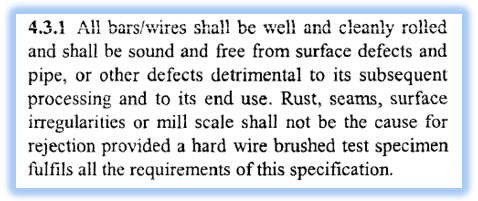
Fig : Guideline of BIS1786-2008
CORROSION is an electrochemical reaction between a metal and its environment. Corrosion occurs when steel reacts with chloride ions (Cl-), CO2 in presence of toxic environment. Corrosion is uneven erosion/pitting of metal surface/ribs due to intense rusting and is harmful to the intended service performance of rebar.NEVER USE SEVERELY RUSTED OR PITTED REBARS.
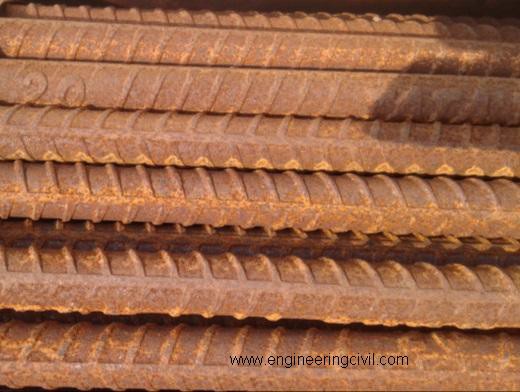
Fig : Rusted rebar (fit for use)
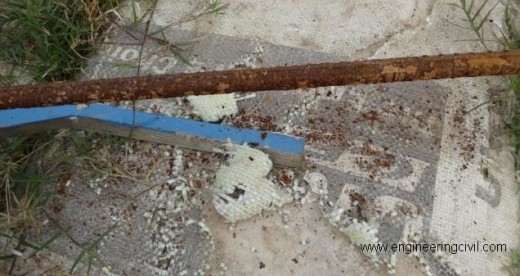
Fig : Corroded rebar (unfit for use)
Precautions against Rusting / Corrosion during construction

Fig (s) : Guidelines as per BIS4082-1996

Fig (s) : Guidelines as per BIS4082-1996
1. Never keep your rebar in direct contact with ground, and without any tarpaulin cover for longer period of exposure. It is recommended that in case of longer storage, the reinforcement bars should be stacked above ground level by at least 150mm.
2. It is recommended that in case of longer storage, the stacked reinforcement bars should be painted by a cement wash [may be cement : water=1:3].
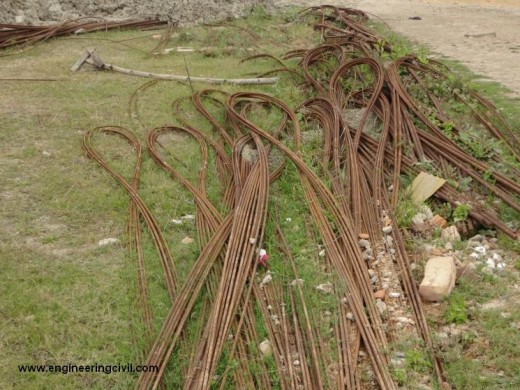
Fig :Wrong Practise: Laying of rebars on ground
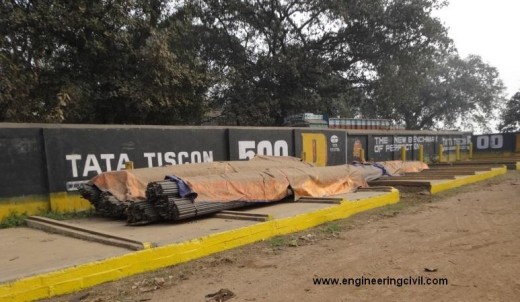
Fig : Good Practise: Stacking of rebars as per BIS guidelines
3. It is observed that the uncovered column rebars projected off above floor slab level is particularly worsely affected at the junction of slab top with the projected rebars. The reason for same is that during curing for 28 days (in general) or rainfall, the water accumulates at this junction. To prevent enhanced rebar corrosion and subsequently adverse effect on rebar strength at this point, it may be recommended to construct concrete kicker/starter of 75mm height. This starter is a part of column and will protect the reinforcement.
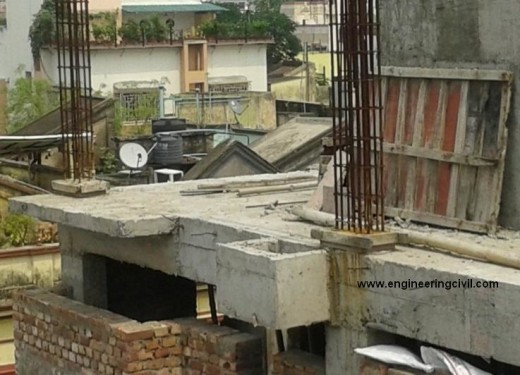
Fig :Construction of concrete kicker (Typ.) for columns
4. In line with point no.2, in case of longer period of exposure it may be recommended that the exposed reinforcement bars should be painted by a cement wash [may be cement : water=1:3].
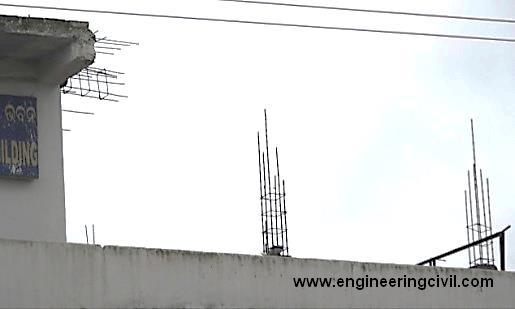
Fig :Exposed rebar (prone to rust/corrosion quickly)
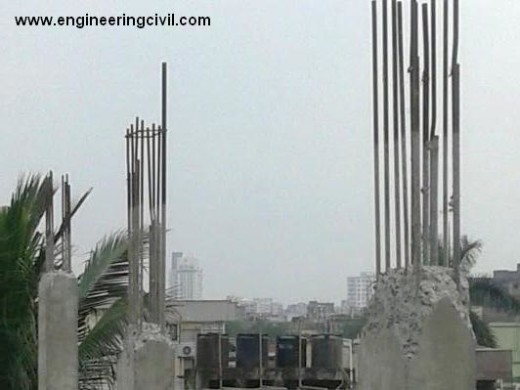
Fig : Exposed rebar (painted with cement wash)
Measures recommended for preventing Corrosion of embedded reinforcement in concrete [Based on BIS9077-1979, Code of practise for Corrosion protection of steel reinforcement in RB and RCC construction]
1. The concrete should be properly compacted by tamping or vibration and adequately cured. After the RCC structure is passed for quality and finish, it may be rendered with cement plaster of 1:2 or 1:3 proportion.
2. Calcium chloride should not be used as far as possible for accelerating the setting and hardening of cement concrete, as this may accelerate corrosion of the reinforcement in all mixes of concrete.
3. Cement, sand, stone aggregates and water, should be tested for chloride and sulphate contents, as corrosion of the embedded reinforcement bar is likely to happen if the total water soluble chloride and sulphate contents exceed the limits of 50 ppm and 500 ppm respectively in raw concrete mix. In such cases, a protective coating on the bars may be necessary.
4. Adequate nominal cover thickness should be provided to steel reinforcement satisfying durability requirements as per table 16 of BIS456-2000 (table 16A on fire resistance requirement also needs to be satisfied along with it). To be noted: deviation of clear cover allowed as per BIS456-2000 = +10, -0 mm.
5. Existing RCC structures may be protected from reinforcement corrosion in aggressive atmospheres by applying protective surface coatings to the exposed surfaces of concrete. Such coatings may be of following types: (i) Cement-sand-asphalt/coal tar pitch mixture coating (cement : molten asphalt or coal tar pitch : dry sand = 1:1:3), (ii) Cement-sand-mortar with neat cement finish (cement: sand mortar=1:3, cement: water slurry=1:2), (iii) Epoxy coating or epoxy mortar rendering. Please check BIS9077 for more details on application.
6. Heavy rusting of reinforcement should be removed by wire brushing or application of commercially produced derusting and phosphating jellies of approved quality.
7. Since it may not be possible to restrict the chloride and sulphate content within the tolerable limits in marine atmospheres or in contact with sea water, the reinforcement bars should be coated with a protective coating of inhibited cement slurry (for guidance on application, please refer appendix-B of BIS9077). It should be ensured that no oil or paint is applied as a protective coating to the reinforcement bar.
In context of point no. 7, it is to be noted that protective coatings involve considerable cost involvement, stringent process control, and possibility of damage during handling or fabrication (cutting and bending) of rebar. Moreover, such coatings minimise bond strength by 20%, and the extent of protection to rebar is not known as per BIS.Smallest damage in coating can initiate corrosion under severe environment.
At this junction, to avoid such headache on coatings, Tata Tisconoffers you “CRS”: Corrosion resistance steel, which possess inbuilt corrosion resistance properties in rebar (due to inherent chemistry composition of the mother billets). It has been found that Corrosion resistance index (CRI) of Tiscon CRS is 1.30, i.e, Corrosion rate of Tiscon CRS is (1.3-1)/1.3 = about 23% lesser in comparison to ordinary Fe500D rebars.
Disclaimer: This document aims only at highlighting good construction practises and meaningful applications during/after construction, to overcome the challenge of rust / corrosion of reinforcement bar. In any case the desired result is not obtained on following the write-up, the author shall not be responsible.
We at engineeringcivil.com are thankful to Sir Sourav Dutta for submitting this very useful information to us. We hope this will be of great use to all the civil engineers who are looking for this information.
If you have a query, you can ask a question here.



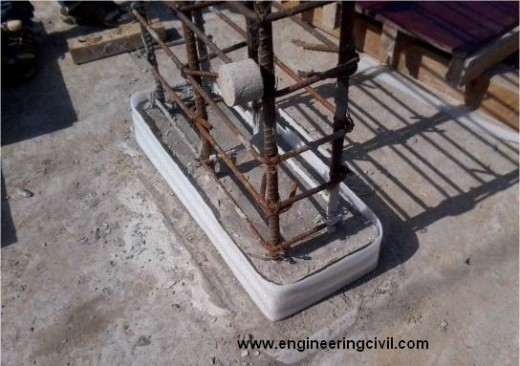
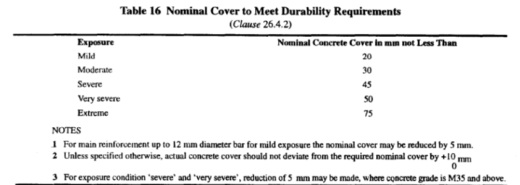

Nice article. But these all are precautionary measures. Please tell the remedy when the corrosion has taken place in the column rebars.
I am constructing my home, using different brands TMT bars,one brand TMT is corroded while curing, other one is not, which is the best quality.